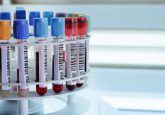New microfluidic devices engineered for longer shelf-life

An international research group from Florida Atlantic University (FL, USA), Stanford University (CA, USA) and Baskent University (Ankara, Turkey) have engineered an innovative approach to preserve microfluidic devices for CD4 T-cell testing in refrigeration-free settings. The team recently published their findings in Scientific Reports.
Microfluidic devices with immunochemistry have a wide application in diagnostics and disease management. One of which is monitoring the effectiveness of antiretroviral therapy in HIV patients.
Current microfluidic devices used in diagnostic applications are limited by the need for cold storage to prevent degradation of antibodies and loss of function. Transportation of these biomaterials in this environment is expensive increasing the costs of these devices.
However, resource-constrained settings are challenged in preserving microfluidic devices to produce reliable repeatable assays that would facilitate patient management at the point-of-care.
“Monitoring HIV patients at point-of-care settings in resource-constrained countries like Africa is critical in knowing how their treatment is progressing and whether or not a particular drug is working the way it should be,” commented Waseem Asghar, co-first author on the study (Florida Atlantic University, FL, USA).
Asghar and his colleagues’ utilized trehalose – a type of sugar present in some plants that enables them to survive in extreme conditions of hot and cold – in order to preserve the microfluidic device. The team posited that trehalose would have a similar effect on multilayer surfaces like a microfluidic device.
The trehalose engineered microfluidic device was then packaged and vacuum sealed in plastic. To counteract the effect of humidity the team utilized a drying agent and exposed the technology to extreme environmental conditions of hot and cold testing its functionality and shelf – life.
The team were able to preserve the microfluidic devices for 6 months with this method.
The device was incorporated with a lensless imaging sensor technology enabling rapid analysis of CD4T cells. CD4T cells were counted automatically using complementary metal oxide semiconductor sensor. The advantages of rapid cell counting and easy accessibility of the technology makes lensless imaging technology suitable for point-of-care settings.
The new microfluidic device if mass produced would cost less than US$1 compared with current CD4 assays, which are associated with an average cost of US$30–50 each.
The device is hoped to improve patient point-of-care services to individuals needing it most in developing countries.
“This technology also is widely applicable to global health applications when resources are limited to address viral load, sepsis, tuberculosis, malaria, as well as cancer detection. It also offers advantages in the developed world in settings such as in a primary care physician’s office or in the home setting,” commented Asghar.
Sources: New method to preserve microfluidic devices for HIV monitoring in developing countries; Asghar W, Yuksekkaya M, Shafiee H et al. Engineering long shelf life multi-layer biologically active surfaces on microfluidic devices for point of care applications. Scientific Reports doi: 10.1038/srep21163 (2016).






